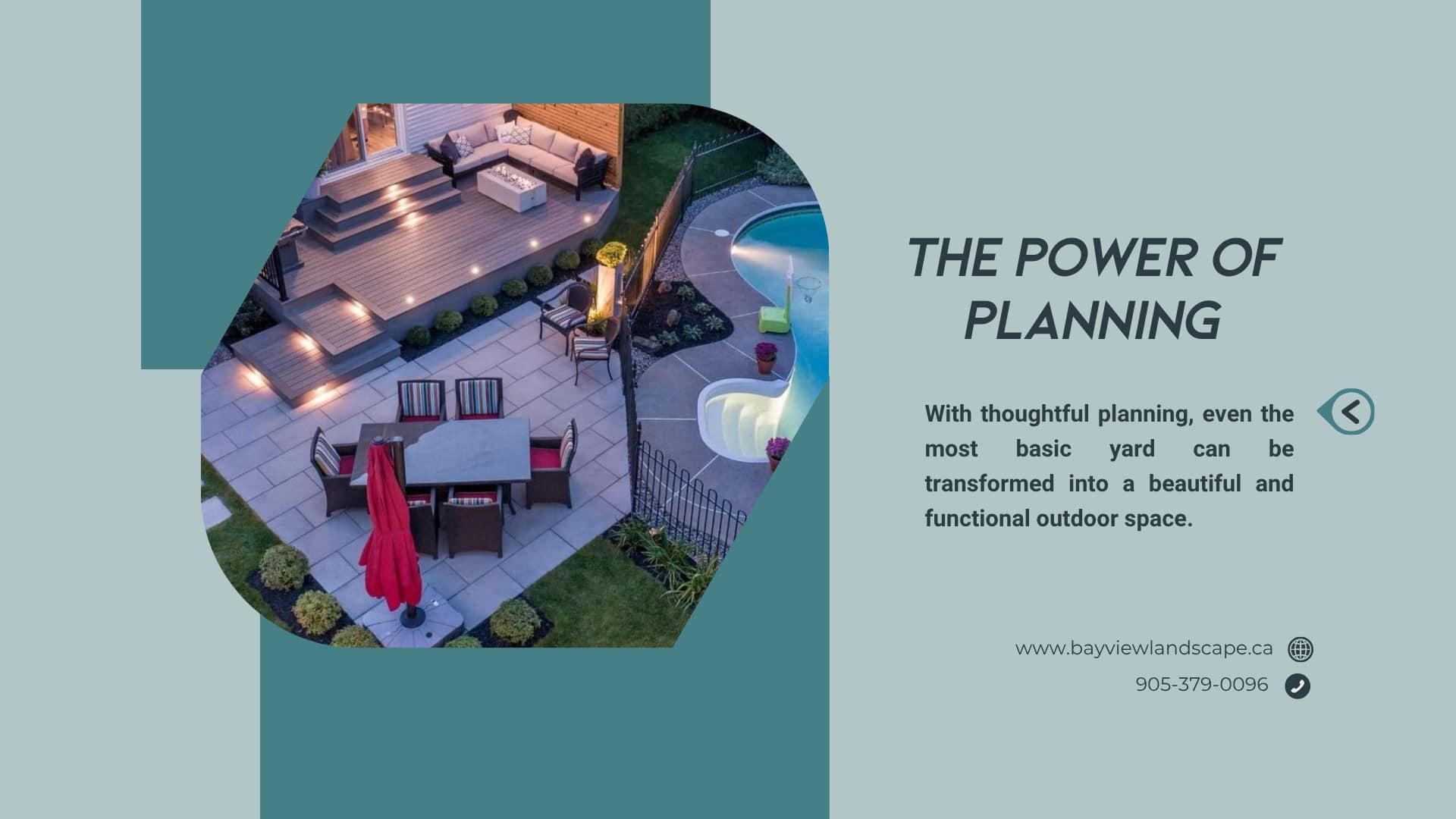A well-thought-out landscape plan forms the foundation for any successful landscaping project. It’s more than just visual appeal—it’s about crafting outdoor spaces that are both aesthetic and practical, enhancing your home’s value and your daily life.
Whether you're starting fresh or upgrading your yard, understanding the basics of landscape design helps you make informed decisions. In this guide, we'll explore essential planning tools, design strategies, and expert insights to help you transform your property into a functional outdoor space that thrives in Ontario’s unique climate.
Landscape planning is a strategic process that blends form, function, and sustainability. It goes beyond simple garden design—we’re talking about custom spaces that support relaxation, play, entertaining, and ecological health.
Key Elements of a Landscape Plan
Modern landscape design often uses 2D/3D planning tools to visualise concepts before construction begins, ensuring alignment with both client goals and environmental considerations.

Planning isn’t just the first step—it’s the most critical. A strong landscape design enhances property value, improves usability, and promotes environmental stewardship.
Environmental Sustainability
By prioritising sustainable practices, such as rain gardens and permeable pavers, landscape planning supports proper drainage and healthy soil. Native plants also attract pollinators and reduce watering needs.
Aesthetic Value
Strategic garden design creates a seamless connection between your home and yard. Well-chosen materials, thoughtful planting schemes, and seasonal interest make your space beautiful year-round. A cohesive landscape plan brings visual harmony to your property.

Every successful landscaping project begins with a structured approach. Here’s how professionals—and informed DIYers—break it down:
Step 1: Site Analysis and Goal Setting
We start by mapping site conditions such as sun exposure, grading, and soil type. In Ontario, understanding whether your soil is clay-based or sandy directly impacts drainage and plant selection.
Step 2: Zoning the Space
Divide the yard into functional zones—for example, dining patios, garden beds, and walking paths. This step ensures that every part of the space serves a clear purpose while maintaining flow and usability.
Step 3: Select Materials and Features
From natural stone to composite decking, material choice is crucial. You’ll also need to consider lighting, water features, or structures like pergolas that enhance both aesthetic appeal and functionality.
Step 4: Choose DIY or Professional Help
DIY projects can work well for small yards or updates. However, for complex builds, we recommend working with a professional landscape design team—especially when permits or detailed grading is involved.
Today’s technology offers tools to streamline planning and improve results:
These tools empower both professionals and homeowners to make confident, data-informed choices.
If you live in Oakville or the GTA, here are some tailored tips:
Designing a landscape isn’t always smooth sailing. Here are some hurdles:
Understanding these challenges upfront makes your project smoother and more successful.

A thoughtfully designed landscape can offer a return on investment (ROI) of 100–150%. Here's why:
If your landscaping project includes major grading, custom carpentry, or advanced drainage systems, working with a pro is often the best choice. Professional teams ensure that every detail—from local bylaws to finishing touches—is expertly handled.
For simpler designs, DIY planning is doable with the right research and software. Just remember to factor in your time, local regulations, and potential challenges.
A well-planned landscape does more than look good—it adds real value, improves your lifestyle, and benefits the environment.
Bayview Landscaping offers expert landscape design services across Oakville and the GTA. From concept to construction, we bring your vision to life with custom solutions that are built to last.
Contact us today to schedule a consultation or explore our recent projects. Let’s build a better backyard, together.
What is a landscape plan?
A landscape plan outlines how an outdoor space will be organised, including zones, plantings, and features. It serves as a blueprint for creating a cohesive and functional yard.
Why is landscape planning important?
It ensures your outdoor space works well while looking great. Good planning improves usability, reduces maintenance, and increases home value.
What are the best tools for DIY landscape design?
Try free 2D/3D planning software or apps that let you experiment with layout, materials, and plant types. GIS-based tools help assess site conditions like slope and drainage.
How do native plants help a landscape?
Native species are adapted to the local climate, requiring less water and upkeep. They also support local ecosystems and pollinators.
Can landscaping improve my property value?
Yes! Thoughtful landscape design can boost curb appeal and ROI—especially when the yard is functional, attractive, and low-maintenance.
Is DIY landscaping worth it?
DIY works for simple updates, but larger builds often benefit from a professional’s eye. Pros understand zoning, permits, and design cohesion.
.svg)